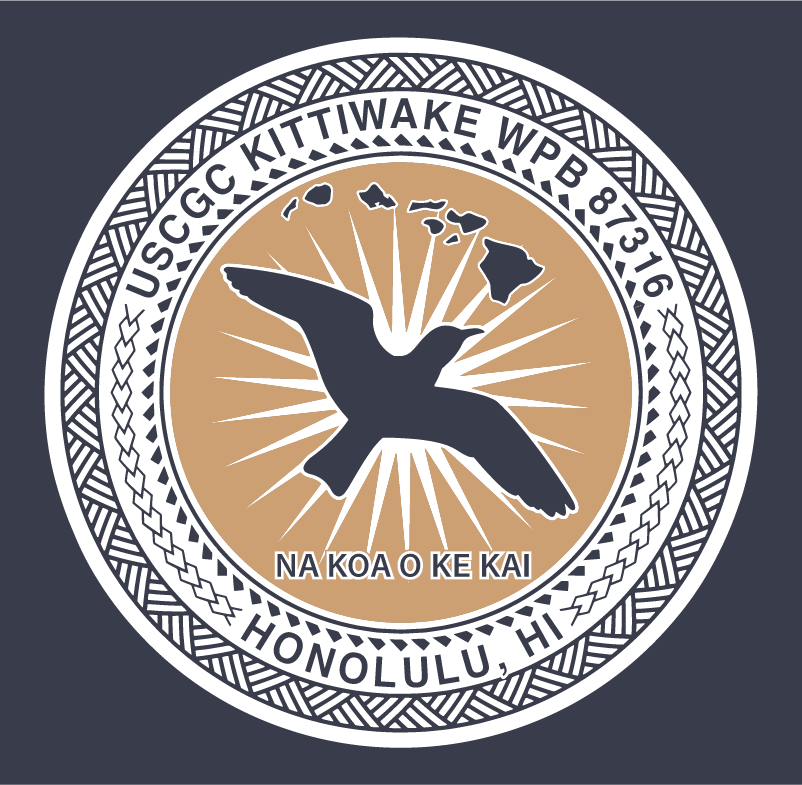U.S. Coast Guard Cutter KITTIWAKE (WPB 87316)
“Na Koa O Ke Kai” - “Warriors of the Sea”

The Island of Oahu
Sometimes called “The Gathering Place,” Oahu certainly lives up to its name. The third largest Hawaiian island is home to the majority of Hawaii’s diverse population, a fusion of east and west cultures rooted in the values and traditions of the Native Hawaiian people. It’s this fundamental contrast between the ancient and the modern that makes discovering Oahu so enjoyable.
The clear blue waters of Kailua Beach meet the metropolitan city scapes of Honolulu. The historic architecture of Iolani Palace meets the timeless memorials of Pearl Harbor. The big city of Waikiki meets the small town of Haleiwa on the North Shore. Whether you’re hiking atop iconic Leahi (Diamond Head), enjoying some of Hawaii’s best shopping, or simply unwinding on the sands of the island’s beautiful beaches, you’ll find variety at every turn on Oahu.
Oahu History
From the Hawaiian monarchy to the attack on Pearl Harbor, an exploration of Oahu’s history reflects the key influences that have impacted all of Hawaii. In 1795,King Kamehameha I led his forces in the legendary Battle of Nuuanu near the scenic precipices of the Nuuanu Pali Lookout. This pivotal battle resulted in the conquering of Oahu and the eventual unification of the Hawaiian Islands under one rule in 1810.
Seven Hawaiian monarchs followed after Kamehameha the Great. King Kamehameha III (Kauikeaouli) permanently established the Hawaiian Kingdom’s government on Oahu. King Kamehameha IV (Alexander Liholiho) and his wife Emma’s summer retreat, the Queen Emma Summer Palace, can still be visited in Honolulu’s Nuuanu Valley today. King Kalakaua, also known as the Merrie Monarch, built the majestic Iolani Palace in Downtown Honolulu. Queen Liliuokalani was Hawaii’s last reigning monarch after American colonists overthrew the Hawaiian Kingdom in a controversial coup in 1893. In 1898, Hawaii became a territory of the United States.
The 1800’s were a time of great change for Hawaii. Christian missionaries became influential after King Kamehameha II (Liholiho) ended the traditional kapu (taboo) system. Many of the historic churches on Oahu are reminders of Christianity’s influence, such as Kawaiahao Church in downtown Honolulu, which was a place of worship for Hawaiian kings and alii (royalty). Soon, new commerce emerging from whaling, sugar and pineapple industries resulted in an influx of western settlers.
As agriculture boomed in the late 19th century, plantation owners found themselves in the midst of a labor shortage. Immigrants from Japan, China, Korea, Puerto Rico, Portugal, Russia and the Philippines arrived to work in the plantations. Today, this mix of ethnicities is the source of Hawaii’s multicultural population. Visitors can step backward in time to explore this era at Waipahu’s Plantation Village. You can also still see the smoke stack of the old Waialua Sugar Mill as you drive toward historic Haleiwa town.
In the early 1900’s, agriculture began to wane and Hawaii’s visitor industry began to grow. In 1901, the Moana Hotel opened on the beach in Waikiki. Today the Westin Moana Surfrider is Hawaii’s oldest resort still in operation. The Halekulani Hotel opened in 1917 as a cottage colony and was rebuilt as a luxury hotel in the 1970s. The Aloha Tower opened in 1926, and was the tallest building in Hawaii for four decades. In 1927 the iconic Royal Hawaiian Hotel opened and was nicknamed the “Pink Palace.”
On the morning of December 7, 1941, the Imperial Japanese Navy attacked Pearl Harbor pushing America into World War II. The surprise attack was aimed at the Pacific Fleet of the United States Navy and its defending Army Air Corps and Marine Air Forces. The attack damaged or destroyed 12 American warships, destroyed 188 aircraft and resulted in the deaths of 2,403 American servicemen and 68 civilians.
In 1959, Hawaii became the 50th state of the United States. Completed in 1969, the Hawaii State Capitol is located in Downtown Honolulu, behind Iolani Palace.
From the largest museum in the state,Bishop Museum, to the Pearl Harbor Historic Sites, Oahu is home to numerous landmarks and significant points of interest that shed light on the fascinating facets of Hawaii’s past.
*Information Source: http://www.gohawaii.com